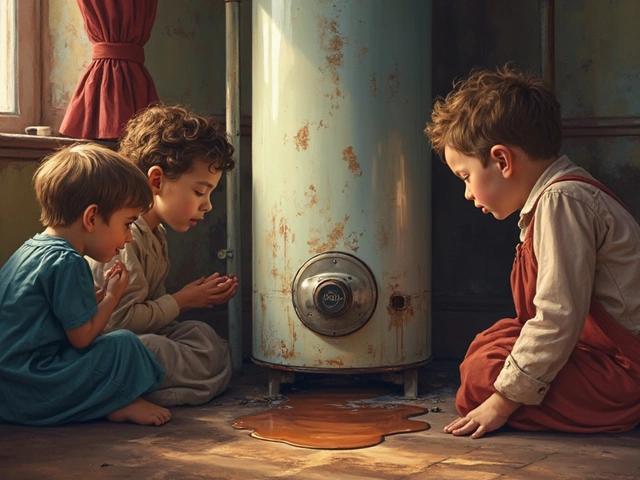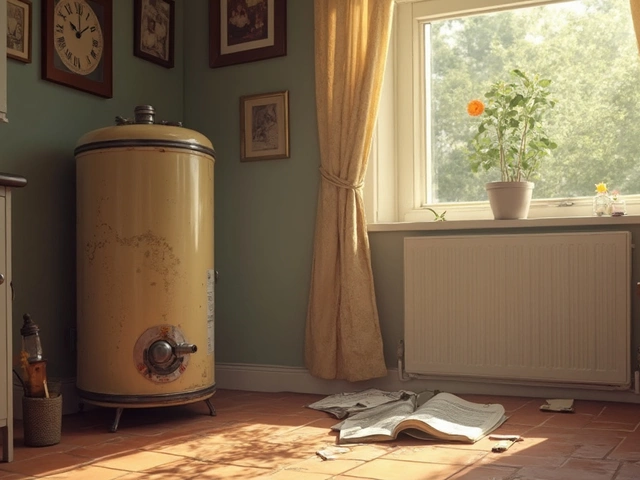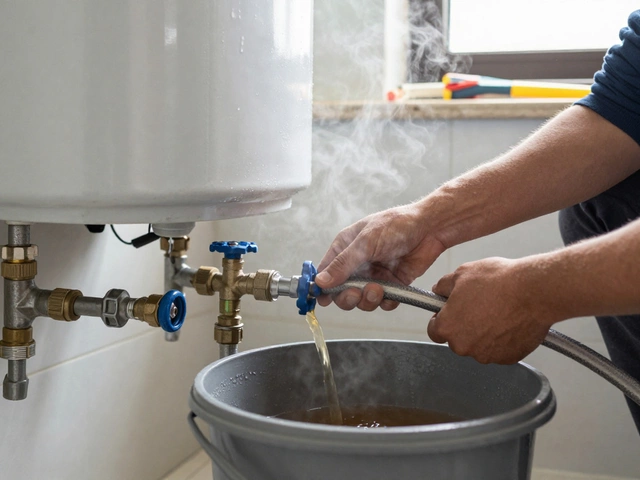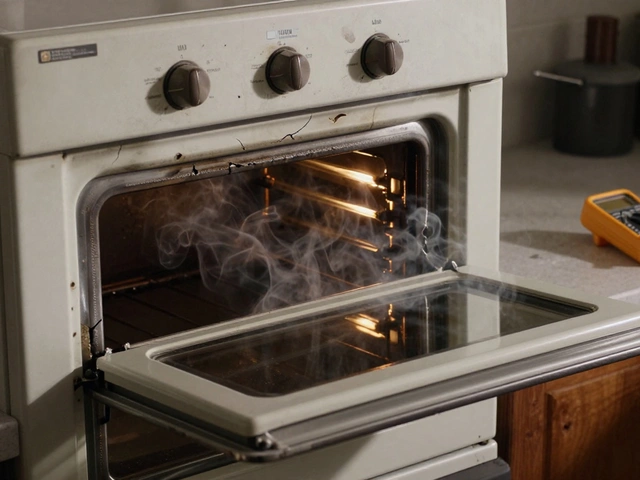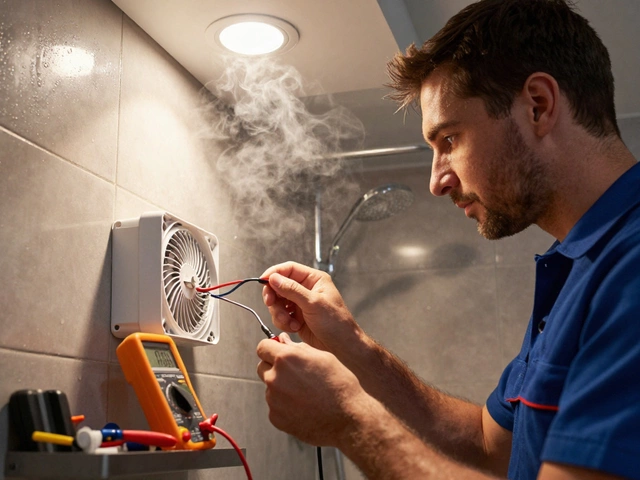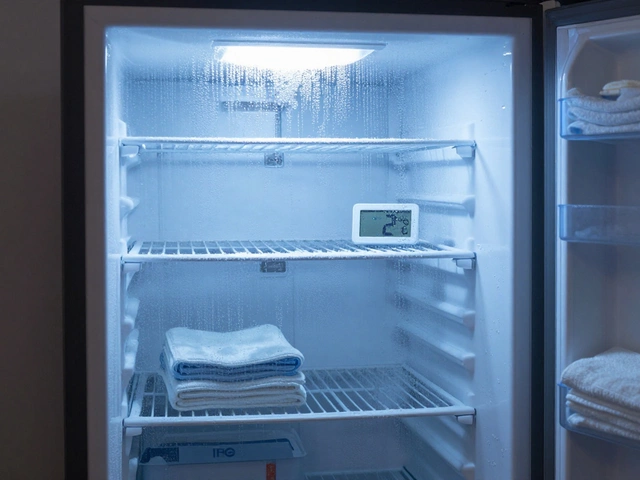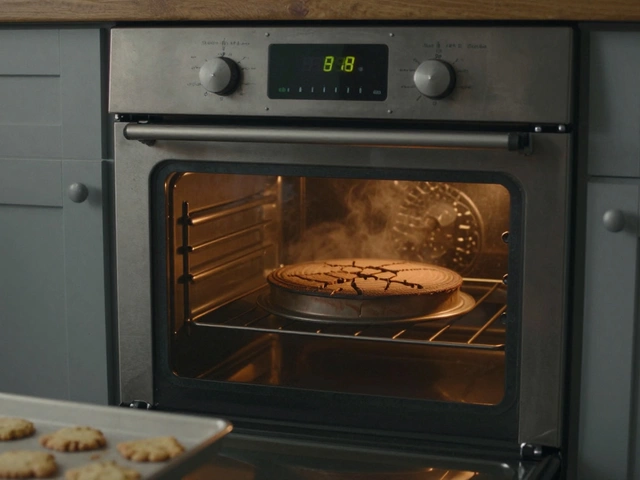Ever had your morning ruined because your shower turned ice-cold halfway through? That’s usually your hot water heater waving a big red flag. Most folks only notice their heater when hot water goes missing, but there are a bunch of other clues it gives you first—and catching them early could save you a ton of hassle (and money).
Common signs? Think about weird, popping noises coming from the tank, rusty or muddy water coming out of the tap, or even puddles forming around the heater. Sometimes your water gets warm but not hot, or it runs out way faster than it used to. It doesn’t have to be a full-on flood for you to realize something’s wrong—these little hints often mean bigger problems are brewing.
Don’t just assume you need a new heater every time something's off. Some issues are quick fixes, while others are warnings you really shouldn’t ignore. Even the age of your heater (most last 8-12 years) can tell you if it’s on borrowed time. Spotting the signs early puts the control in your hands—so you can dodge disaster, DIY a fix, or call in a pro before things get worse.
- Warning Signs You Can't Miss
- Why These Problems Happen
- Quick DIY Checks Before You Call
- When It's Time for a Replacement
Warning Signs You Can't Miss
Your hot water heater will give you plenty of clues before quitting for good. Some are glaring; others are easy to brush off. Ignoring these signs usually turns a cheap fix into a spendy nightmare, so here’s what to watch out for:
- No Hot Water or Lukewarm Water: The biggest red flag. If your heater isn’t doing its main job or the water never gets hot enough, something’s up—likely with the heating element or thermostat.
- Strange Noises: Hearing pops, bangs, or rumbling from the tank? That usually means sediment has collected at the bottom. Sediment makes your heater work harder, wastes energy, and can crack the tank if ignored.
- Rusty or Discolored Water: Rusty water, especially from the hot tap, means your tank might be corroding inside. If it’s just one faucet, it’s probably your pipes; if it’s all hot water, your heater is likely the culprit.
- Leaks or Moisture Around the Heater: Any water pooling or dampness near the base means trouble. Sometimes it’s just a loose valve, but it can also signal cracks in the tank—a sign the whole system needs looking at.
- Hot Water Runs Out Fast: If showers turn cold quicker than they used to, your heater’s capacity could be dropping due to sediment buildup or an aging heating element.
Notice any of the signs above? You’re not alone—roughly 75% of water heater failures start as small leaks or heat issues that get ignored. Most heaters quit after about 10 years. Here’s a quick look at the most common warning signals and what they usually mean:
| Sign | Possible Cause |
|---|---|
| No hot water | Broken heating element, faulty thermostat |
| Odd noises | Sediment buildup |
| Rusty water | Internal tank corrosion |
| Water leaks | Loose fittings, cracked tank |
| Runs out too soon | Sediment, worn out heater |
Most of these signals show up before a big failure, so don’t shrug them off. Catching them fast can mean the difference between a quick fix and a costly replacement.
Why These Problems Happen
Your hot water heater is like any other hard-working appliance—it breaks down after a while. Most problems come from wear and tear, water quality, or plain old age. Let’s break down what’s actually going on inside when things start to go wrong.
- Sediment Buildup: Over time, minerals in your water settle at the bottom of the tank. This can make your heater rumble or pop and creates a barrier between the burner and the water, making it work harder and costing you more in energy bills. In areas with hard water, this buildup happens way faster.
- Corrosion: Rusty water usually means the tank (or the anode rod inside) is rusting out. The anode rod is like a bodyguard—its job is to attract corrosive stuff so your tank doesn’t rust. But once the rod is gone, the rust starts eating away at your tank.
- Leaks: Leaks aren’t always from the tank itself. Sometimes, connections or valves get loose or crack from years of pressure changes. But if you see water under the tank and your heater is old, the inside could be rotting away.
- Faulty Heating Element: If your water isn’t getting hot enough or stays lukewarm, one of the heating elements could be burned out. Electric and gas water heaters both have different parts that can fail—pilot lights, thermostats, or electrical elements.
Here’s a quick look at why most hot water heater issues pop up, according to the numbers:
| Problem | Primary Cause | Expected Lifespan (years) |
|---|---|---|
| Sediment Buildup | Hard water minerals | 5 – 8 (with no maintenance) |
| Corrosion/Rust | Old anode rod, high minerals | 8 – 12 |
| Leaks | Age, pressure, loose fittings | 8 – 12 |
| Heating Element Failure | Worn-out parts, electrical issues | 6 – 10 |
If you live in a place with really hard water, or if your heater hasn't been flushed out once a year, all these problems show up faster. Regular checkups and knowing the basics keep your heater running smoother and help you dodge messy surprises.
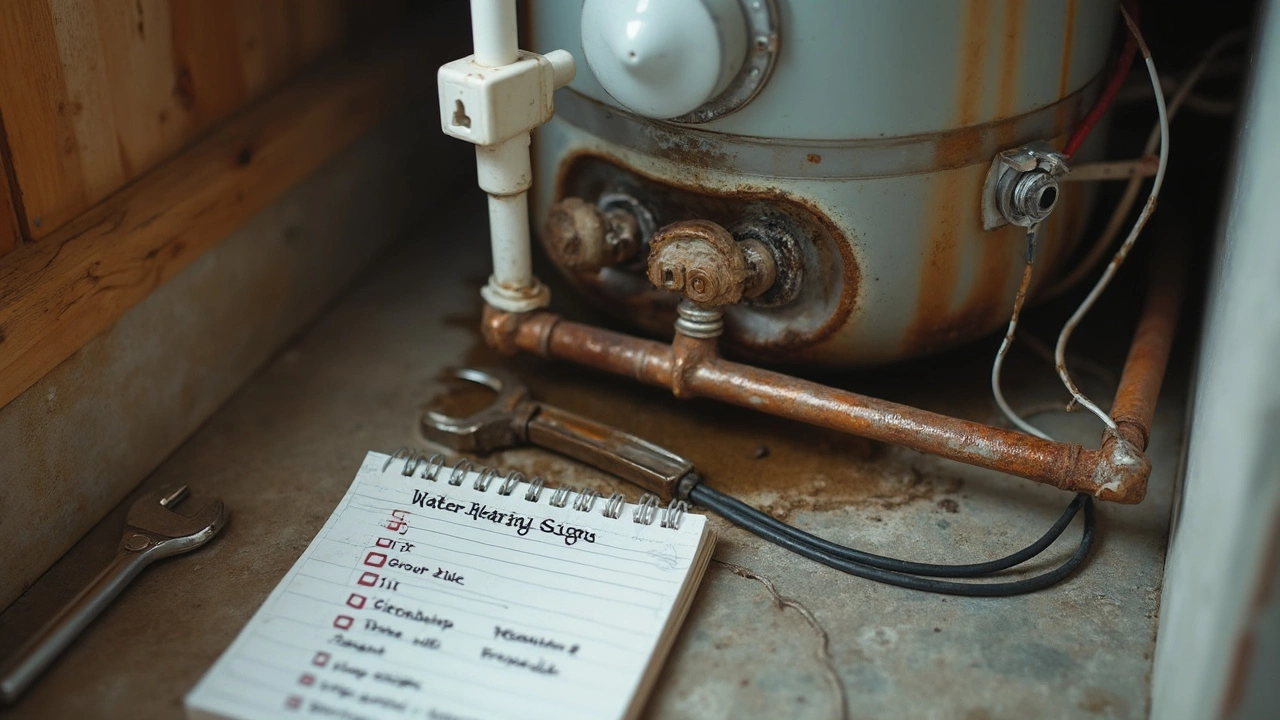
Quick DIY Checks Before You Call
Before you panic or dial up a repair tech, there are a few things you can check yourself. Most of these take about five minutes, and you don’t need a toolbox full of gadgets—just a nearby light switch and your eyes.
First off, check your water heater’s age. Find the serial number on the tank—manufacturers usually include the date in those digits. If yours is pushing past 10 to 12 years, start making plans for a new one, especially if it’s acting up.
- Hot water heater not keeping up? Check the thermostat setting. It should be around 120°F for most homes. Much lower and your water feels lukewarm. If it’s set high and still struggling, something’s off.
- Look for visible leaks or puddles around the base. Even a tiny drip could mean the tank’s lining is shot—and that repair is almost always a replacement.
- Got rusty water? Fill a bucket with hot water from a tap. Murky or orange? That probably means the tank’s starting to corrode from the inside. Double-check with a cold-water tap—the problem should only show up when it’s hot.
- Listen for popping or banging noises from the tank when it’s heating. This noise usually means sediment is building up on the bottom and the heater is working overtime. You can drain the tank yourself to flush out some of that gunk. Just check the owner’s manual for steps—it’s usually as simple as connecting a garden hose and letting it run until clean.
- If you own a gas heater, peek at the pilot light. If it’s out or flickering, relight it if you feel comfortable or check the owner’s guide for troubleshooting tips. For electric heaters, check your circuit breaker—sometimes a simple flip is all it takes.
Here’s a quick breakdown of what you might notice and what it could mean:
| What You Notice | Possible Cause | DIY Fix? |
|---|---|---|
| No hot water | Tripped breaker, pilot out, broken heating element | Reset breaker, relight pilot, call for element replacement |
| Rusty water | Tank corrosion | No—start planning for a new tank |
| Popping noises | Sediment buildup | Flush the tank |
| Leaks | Cracked tank or loose valve | Tighten valve—replace tank if it’s leaking from the bottom |
Doing these quick checks helps you figure out if it’s a simple problem you can fix or a real emergency. If your heater is old, leaking badly, or showing signs of rust, it’s usually time to call a pro or consider a replacement. Don’t ignore any issues—you’re not just risking cold showers but also possible water damage down the road.
When It's Time for a Replacement
Sometimes it’s just smarter (and cheaper in the long run) to swap out your hot water heater instead of dumping cash into repairs that won’t last. Here’s how you know it’s time to say goodbye:
- Age: If your water heater is 10 years or older, it’s on borrowed time. Most standard tank heaters tap out between 8 and 12 years—it’s not just about luck; parts simply wear down. If yours is closing in on a decade, keep your eyes peeled for trouble.
- Rusty Water: Catching rust in your hot water usually means the inside of your tank or its pipes are corroding. Once it starts, there’s no going back. Flushing the tank rarely solves rust problems for long.
- Leaks: If you spot leaks at the base of the tank, don’t just mop it up and hope for the best. Leaky tanks almost always mean a crack from expanding metal, and cracks only grow bigger.
- Unreliable Hot Water: When your showers keep swinging between scalding and freezing, or you’re running out of hot water stupid-fast, chances are the heating element or dip tube has failed—and those fixes don’t buy you much time on an older heater.
- Noisy Operation: Knocking or popping? That’s mineral buildup hardening and messing with the tank’s efficiency. It gets worse with age. If you flush the tank and the noise won’t stop, your heater’s probably near the end.
It’s easy to think repairs are always cheaper, but when you start adding up costs for parts and labor every year or two, replacement often makes more sense. And if your energy bills are creeping up, your old heater is likely to blame. Even new mid-range models save around 8-20% on energy use compared to units from a decade ago.
| Heater Type | Average Lifespan |
|---|---|
| Conventional Tank | 8-12 years |
| Tankless (On-Demand) | 15-20 years |
| Heat Pump Heater | 10-15 years |
If you spot several of these problems—especially on an older heater—it’s time to get serious about replacement. Don’t gamble with a potential flood or the misery of no hot water. Getting ahead of a failure means you can shop around and plan the install instead of scrambling through a cold shower emergency. Prioritize hot water heater replacement if the signs are stacking up.



